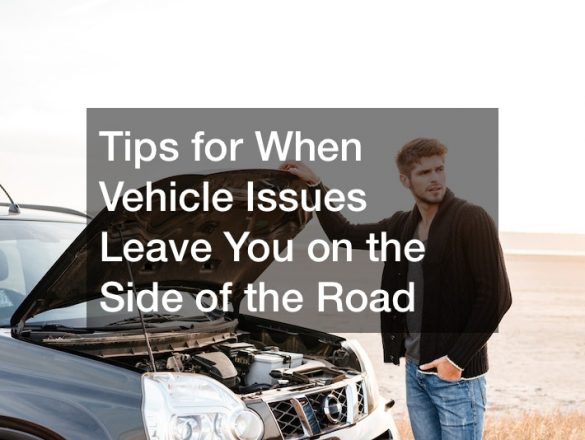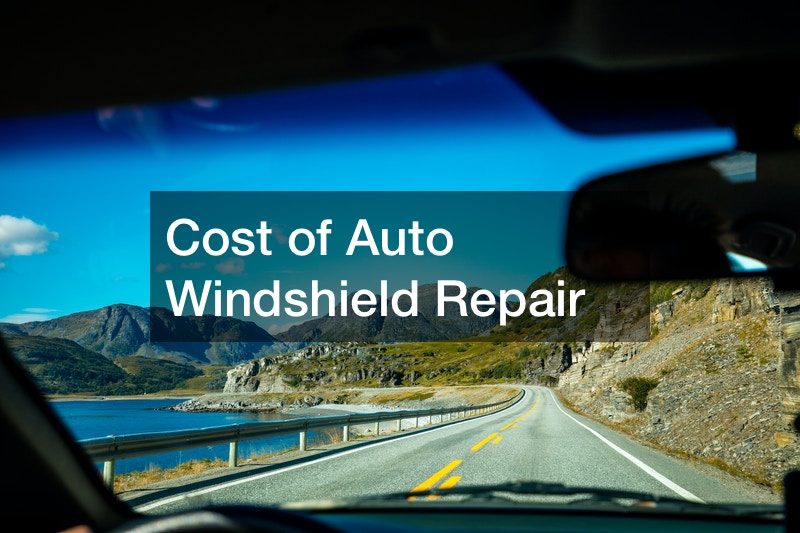
If you drive, the chances of you encountering vehicle issues at some point, are pretty good. If you’re lucky, you’ll know about them before departing on your commute or trip. Unfortunately, many people end up with a problem in the middle of driving.
Whether it’s engine failure, a flat tire, running out of gas, or an accident, problems can unexpectedly occur. It’s scary and can be a logistical nightmare that can turn your day upside down. Regardless of the vehicle issues that have left you stranded, you’re going to need to act quickly to ensure your safety and that of those around you.
Then you need to worry about the car and how to get the issue fixed. It’s a lot and can be difficult to think of everything at that moment when you’re shaken, frustrated, worried about being late, and all the other things that run through our minds when we have vehicle issues. But never fear, we’ve compiled this handy list of tips to help when vehicle issues have left you on the side of the road.
1. Pull Out Of The Road

One of the most important things to do if you know you’re having vehicle issues is to pull over out of the road. Put your hazards on to let other drivers know you’re having a problem, and carefully pull out of the way of traffic. Obviously, if you’ve been involved in an accident this is not always possible. But if it’s something like a flat tire, running out of gas, or engine trouble, it’s best to pull over.
Don’t attempt to make it home, this could make the situation worse, and endanger other drivers as well as yourself. If you’re on a rural road there may be a farm stand or even summer camps you can pull into. If you’re in the city there’s sure to be a gas station or parking lot you may be able to get to. The most important thing though is to get the vehicle off the road, so you don’t cause an accident.
2. Prepare Emergency Supplies
Emergency supplies should be an integral part of your car. You never know when or where vehicle issues will pop up, so a storage container full of supplies can be invaluable when the need should arise. Your emergency storage could be a duffel bag, a plastic container, or even a cardboard box.
It should contain items for safety and comfort like a first aid kit, water, food, wipes, and blankets. Next you’ll want to be prepared with items that will help you solve immediate vehicle issues like a fire extinguisher, flashlight, jumper cables, gloves, a multipurpose tool, and a tarp. It’s also a good idea to have road flares, a cone, or road triangles to alert other vehicles. You can customize your emergency storage by including spare medication that you may need, diapers, or even pet food.
3. Stay Away From Traffic
When you’re having vehicle issues and are stuck on the road, the last thing you need is a trip to the medical center. This is why staying away from traffic is vital to your safety. Do not under any circumstances attempt to enter the road to flag down help, or retrieve any items that may have fallen from the car.
Stay on the side of the road, as far from traffic as you can. If you’re able, stay a good distance away from the car itself. People have been known to get hurt when other drivers are not paying attention and hit a disabled vehicle on the side of the road.
4. Diagnose The Problem

Once you and the car are safely on the side of the road, you can begin to diagnose the problem. Chances are the problem will be with one of the aluminum components in the car. Most car manufacturers have been using aluminum to replace steel in vehicles due to its cost-effectiveness, ability to absorb shock, and reliability against corrosion.
Aluminum components on cars can include items like wheels, engine blocks, gearboxes, electrical wiring, brake parts, as well as the frame. A diagnostic checklist when you’re stuck on the side of the road can include simple things like checking the gas gauge and the tires. Look at the dashboard for any warning lights that may alert you to the vehicle issues like the battery, engine, oil, or tire pressure.
Listen for strange noises. Often, a certain noise can indicate specific problems. For instance, hissing will tell you that the car may be overheated. If there’s a clicking noise when you try to start the car, that may indicate a dead battery.
Doing some simple diagnostics can help you figure out if you can fix it yourself, or you need to call for assistance. It will also give you the information you need to help any roadside assistance know what they should bring to help. Just don’t go overboard and jeopardize your safety.
5. Keep Passengers In The Car
If you find yourself on the side of the road with vehicle issues, it’s extremely important that all passengers stay inside the vehicle. Just because the car is on the side of the road, doesn’t mean you’re out of harm’s way. Many tragedies have occurred when people were standing near their cars while waiting for help.
Drivers are not always paying attention, especially when they’re trying to pass other cars. Trucks often swerve and can lose control causing injury to anyone or anything in their path. Most passengers can do little to help outside the vehicle. The best thing they can do is stay put, with their seatbelts on. Do not remove children from car seats or boosters either.
As difficult as it may be for everyone to have patience, it’s simply safer to be in the car than wandering around the side of the road. If adults want to help, have them make phone calls. When the kids start to get squirmy, offer them a snack or toy from the emergency storage supply. You have enough going on with the car, you don’t need a call from an attorney stating you were negligent with your passenger’s safety on top of it.
6. Stay Calm
Perhaps the most important tip is to stay calm. As long as everyone is safe, everything else will fall into place. Regardless of whether you have vehicle issues with an exotic car or an old clunker, they will eventually be resolved. Getting upset will not help anything, and it could impact your ability to get yourself back on the road.
You’ll also likely upset your passengers, and that’s sure to make matters worse. So take a moment to gather yourself, maybe grab a bottle of water, take some deep breaths, and remember that it’s only car trouble. Staying calm will allow you to keep a clear head and check out the possible problems and assess any danger. You’ll also be able to have help arrive faster if you’re able to describe the vehicle issues to a mechanic or tow truck dispatcher in a calm manner.
7. Call A Towing Company

If you’re unable to fix your vehicle issues on your own, you may need to call for a tow truck. If your vehicle is disabled due to an accident and the police have been called, chances are they will call for a tow truck if needed. However, if it’s just a matter of the car not starting you’re probably on your own.
The good news is, if you are a member of a roadside assistance program, you can contact them and a tow truck will come right away. Also, many insurance companies offer roadside assistance to their customers. Be sure to check your policy to see if you’re covered for that service.
If you aren’t covered by either of those services, there are usually many gas stations, mechanic shops, and general tow truck companies close to all major roads. You can simply do a quick search for the closest tow truck service. If you have in fact been involved in an accident that caused your vehicle issues, be sure to keep all receipts and reports from the tow truck in case you decide to consult with an auto accident attorney in the future.
If you’re in need of a ride, it’s possible that the tow truck driver will accommodate you. They will often let customers ride along to the repair shop, and may even take you home. If you’re in need of a ride, it’s important to ask when you call.
8. Prepare Documents
Another thing you should do as soon as possible when you find yourself stuck on the side of the road with vehicle issues is to get all of your documents ready. If there’s been an accident, you’ll need your driver’s license, proof of insurance, and car registration. The police will ask for all of these documents, and you may need to exchange them with other drivers.
You may also need this information if you call your insurance company for roadside assistance. They will most likely ask for the policy number and other vehicle information. In any case, you should gather all of your documents and keep them with you, in case your car needs to be towed to a shop. This way, you know they are safe. While most mechanic and auto body service shops are perfectly reputable, these documents can contain private information that you just don’t want to be exposed to the general public.
9. Assess And Document Damage
If you find yourself on the side of the road with vehicle issues due to an accident or other occurrence (fallen tree, debris, etc.), you’ll first want to make a general assessment of the vehicle, to determine if it’s drivable. If not, knowing the extent of the damage is important, so you can decide what type of service is needed. You may be able to simply call a friend for help, or you may need the help of a local auto repair shop and tow service.
While you’re visually assessing the damage, it’s vital to document any and all damage to your vehicle, and any other vehicles involved. Take as many photos as possible of your car and the surrounding areas. Take photos of the roadway where the incident occurred, any debris involved, and anything else you think may be helpful.
Documentation is a valuable resource for police when writing reports. It’s also the primary evidence an attorney or judge will ask for should you need to go to court. Most insurance companies will send their own assessor out to take document damage, but it’s always useful for them to see what occurred at the scene. Documentation is an overall good idea to protect yourself in a variety of situations.
10. Place Flares Or Traffic Cones

Once your vehicle is safely off to the side or shoulder of the road, it’s important to alert other drivers that there’s a car with vehicle issues up ahead. The easiest way to do this is to place road flares or traffic cones around the car. You may also want to consider warning triangles. These are highly reflective and hard to miss while being compact and less cumbersome than cones.
Triangles are also easier to use than flares for some people. Whatever you choose to use, it’s recommended that you place at least one a few feet behind the vehicle, and one or two on the side. But do not place them in the middle of the road where other cars may hit them. Once you’re safe and sound, get your vehicle to an auto body service.
Final Thoughts
Being stuck on the side of the road with vehicle issues can be stressful and scary. But staying calm and being prepared are the keys to resolving this frustrating situation as quickly and smoothly as possible. It may sound cliche but in this case, remember safety first. We hope you never need these tips, but if you do, we think you’ll find them helpful in getting back on the road.


